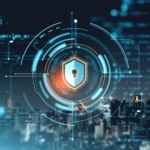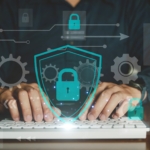On October 20, 2023, Okta, a leading identity and access management provider, disclosed a major security breach. A stolen credential allowed unauthorized access to their support case management system, exposing sensitive data belonging to numerous customers. This incident, now dubbed the “Okta ransomware attack,” sent shockwaves through the tech industry, raising concerns about the vulnerability of even the most secure systems.
The attacker, using valid session tokens extracted from uploaded files, gained extensive access to customer environments. This potentially compromised critical data like usernames, passwords, and internal network configurations. While the full extent of the damage remains unclear, several high-profile companies, including Twilio, Sitecore, and Cloudflare, confirmed being impacted.
The Okta attack highlights the evolving nature of cyber threats. Hackers are increasingly targeting trusted third-party vendors like Okta to gain access to a wider range of organizations. This “island hopping” approach underscores the interconnectedness of our digital ecosystem and the ripple effects of even seemingly isolated breaches.
The immediate aftermath of the attack saw Okta scrambling to contain the damage and reassure customers. They revoked compromised tokens, reset passwords, and implemented additional security measures. However, the long-term repercussions are still unfolding. Affected companies are now grappling with potential data breaches, reputational damage, and the costs of incident response and remediation.
The Okta attack serves as a stark reminder of the importance of cybersecurity vigilance. Organizations must prioritize robust security protocols, including multi-factor authentication, regular security audits, and employee cybersecurity awareness training. Additionally, diversifying vendor reliance and minimizing reliance on single points of failure can help mitigate the impact of future attacks.
In conclusion, the Okta ransomware attack is a wake-up call for the tech industry and beyond. It underscores the need for continuous vigilance, proactive security measures, and a collaborative approach to combating increasingly sophisticated cyber threats. Only by acknowledging the interconnectedness of our digital world and working together can we effectively protect our data and our systems from malicious actors.







 Smoke testing is a term used to describe the testing process for servers after patches are applied.
Smoke testing is a term used to describe the testing process for servers after patches are applied.  This is a basic cost calculator for you to compute your typical monthly cost for patching your servers, PCs, laptops, tablets and associated application software. It also forms the basis for you to begin calculating your Return on Investment for software patching, or for comparison with alternatives to the manual process of patching operating systems and application software—such as Patch Management as a Service, also known as Vulnerability Management as a Service.
This is a basic cost calculator for you to compute your typical monthly cost for patching your servers, PCs, laptops, tablets and associated application software. It also forms the basis for you to begin calculating your Return on Investment for software patching, or for comparison with alternatives to the manual process of patching operating systems and application software—such as Patch Management as a Service, also known as Vulnerability Management as a Service.